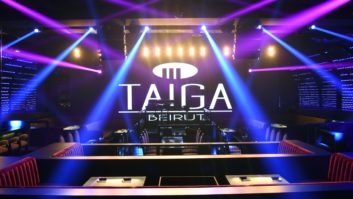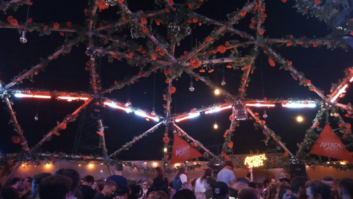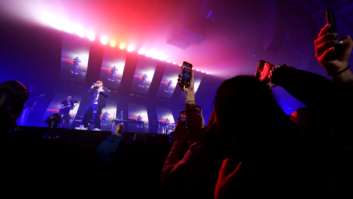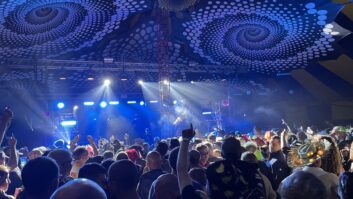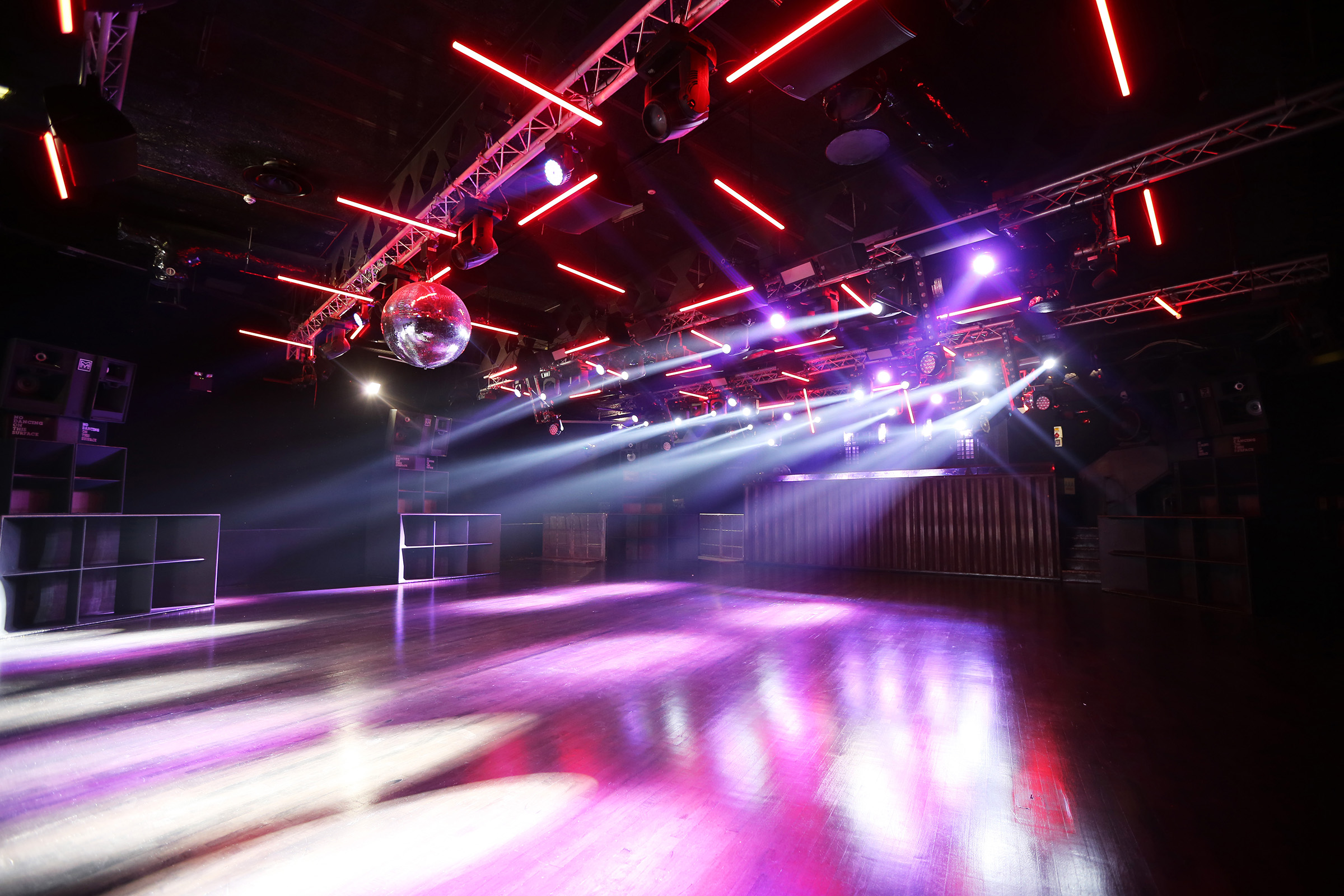
A recent installation at an iconic London venue has led some to wonder whether immersive audio might be the ‘next big thing’ for club audio. But as David Davies reports, a need to accommodate different applications in an unpredictable market may exert a greater influence on the clubs of the future.
It is tempting to say that these are unpredictable times for clubland – but then in truth it was ever thus. After the electronic music boom of the Nineties and early Noughties that spawned a new generation of (super) clubs throughout Europe, a slowdown was surely inevitable – although in the UK it has been especially marked, with the Association of Licensed Multiple Retailers (ALMR) recently reporting that nearly half of the UK’s nightclubs closed their doors between 2005 and 2015.
Simultaneously, however, there has been a dramatic expansion of the club scene in the US, where a belated embracing of rave (handily, if somewhat blandly, rebranded as EDM) has financed a new wave of clubs in key cities like Los Angeles and Las Vegas, as well as a series of spectacular festivals. Elsewhere, thriving scenes in cities like Macau and Singapore are pointing to an increasingly vibrant future for clubbing in Asia-Pacific.
Despite these fluctuations, there is no such inconsistency in the general improvement of club audio standards. Highly directive line array and point source systems have made a dramatic difference to club sound, and allowed venues to cope not just with the ever-increasing number of dance-related sub-genres – but other styles of both recorded and live music as well. And now – with installations like the recent landmark project at London’s Ministry of Sound – we are beginning to see the emergence of immersive sound environments.
While this trend is widely acknowledged, it is not expected to become as commonplace as it is in some other settings, such as cinemas. Instead, venues are likely to place more emphasis on system designs that allow them to diversify into other areas such as corporate events and private parties – a pragmatic response to a market whose trajectory remains difficult to predict.
Thinking inside the Box
But first a few words on that aforementioned Ministry of Sound installation. A long-time exclusive user of Martin Audio sound systems, the MoS recently invested in 16 of the company’s new CDD15 (Coaxial Differential Dispersion) speakers for installation in the ceiling of key dance room The Box. The result is that, as of January 2016, the venue has been able to utilise Dolby Atmos sound technology, with a total of 22 Martin Audio loudspeaker channels delivering sound anywhere throughout the room.
Reflecting on the project – which also allows synchronised lighting cues to be generated from music mixed in the Dolby Atmos surround sound technology – MoS production manager Chris Thoms remarked: “When Dolby decided to introduce Dolby Atmos to the club world they were looking for a flagship venue to showcase it. We were approached both as a business and a music company – but more importantly we already had a six-point system set-up, and The Box is an acoustically treated space – so it was a perfect fit.”
While Martin Audio R&D director Jason Baird was closely involved with the project, he doesn’t expect immersive audio to become ubiquitous any time soon. “I think it is an emerging trend, but one that will remain the preserve of clubs with high production values,” he says.
Mass adoption or marginal?
Baird’s view is echoed elsewhere in the manufacturing community – albeit to varying extents and with different emphases regarding actual factors that will prompt the adoption of immersive designs.
For Ken Berger, CEO of VUE Audiotechnik: “The trend to incorporate more immersive environments, both with video and audio, is going to continue and expand with LED walls being the primary driver of these new environments. The spread of LED walls will change virtually all clubs, along with most public spaces. Developing audio systems to support these immersive experiences will be one of the biggest growth markets the audio industry has ever seen…”
Pioneer has lately seen its GS-WAVE Series – which comprises a three-metre dancefloor stack with dispersion and high SPL across a broad frequency range – installed in a number of immersive club designs, including Berlin’s Magdalena Club, which features a set-up based around 8 GS-WAVE Stacks and related subs.
“These are of course top-of-the-range systems, but it is apparent that systems which allow people in the club environment to feel properly immersed in sound are becoming more popular,” says Pioneer professional audio specialist David Ferreira. “Not only does it give venues a great sonic resolution, it has a positive aesthetic impact as well.”
Ferreira agrees that a certain amount of upskilling is required to make the most of such systems, but his recent experiences indicate that “FOH engineer and DJ skills are getting better all the time. There is an awareness that filling the environment with sound in this way can be a cause for enhanced creativity – it’s just that you do require the infrastructure to match.”
Auro Technologies – the immersive audio specialist that grew out of Belgium’s Galaxy Studios – continues to bring its Auro-3D audio technology to cinemas, home theatres, portable listening and more. Business development manager for music Iwan De Kuijper describes immersive sound as “an evolution in audio that is here to stay”, but implies that it could be a while before it becomes a preference for clubs.
“Immersive audio is an interesting subject when it comes to the club environment, but given the experimental phase today we notice that many components to it still need to be taken into careful consideration,” says De Kuijper, who suggests that reconfigured layouts could be part of immersive implementation in clubs. Nonetheless, “we are confident the immersive experience can be translated over time to a variety of larger and high-profile venues”.
For Funktion-One founder Tony Andrews, the reasons why immersive is taking a while to arrive in clubs “are to do with having a suitable environment, suitable material, and the slow speed of sound doesn’t help – and over-complicating it with masses of digital processing is not necessarily an answer”.
But with “more and more people appreciating dimensional audio”, it is clear Andrews sees current developments as inevitable and part of “a long-term trend going back to the quadrophonic systems of the 1970s. Funktion-One has been doing pioneering work in this area since The Experimental Soundfield of Glastonbury 1992. For the last 20 years we have been installing four- and sometimes six-point systems around the world simply using interesting location of right and left stereo.”
www.auro-3d.com
www.funktion-one.com
www.martin-audio.com
www.pioneerproaudio.com
www.vueaudio.com
